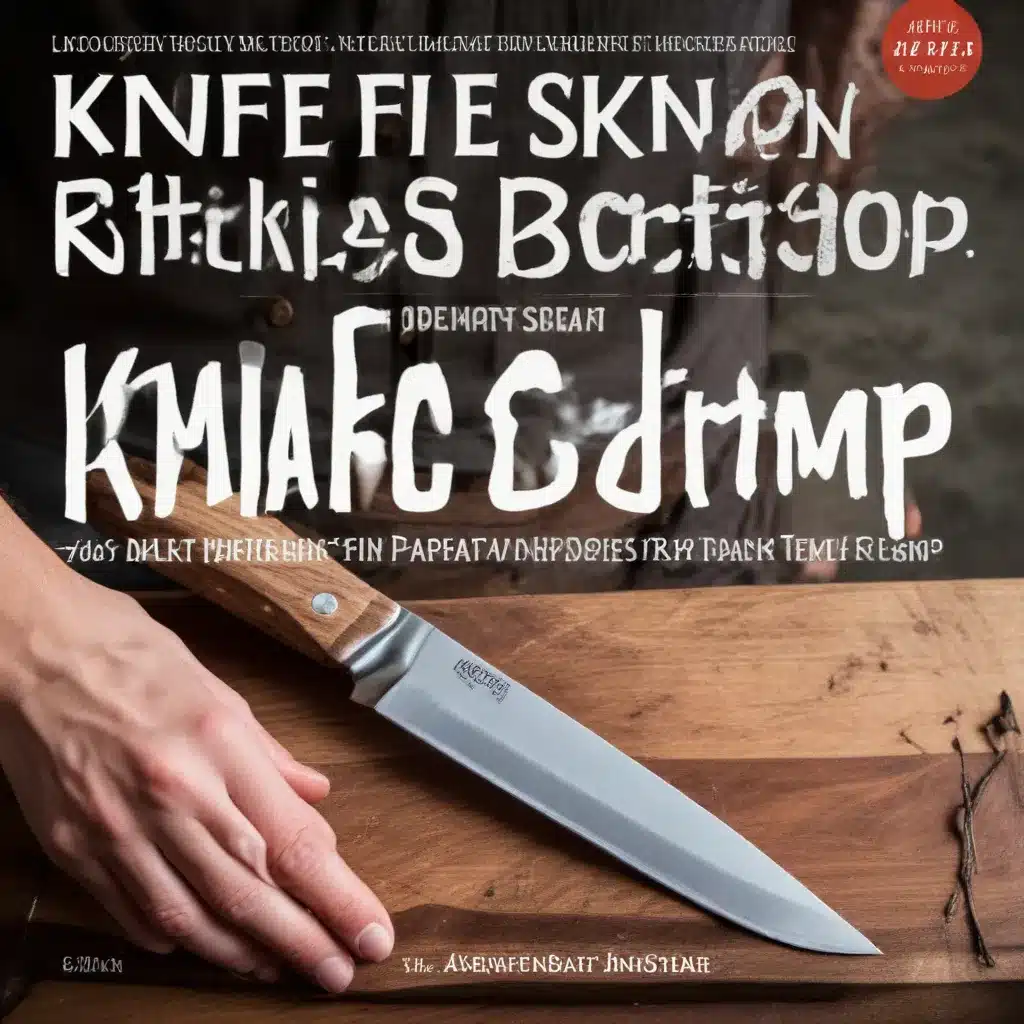
Mastering the Art of Cutting: Essential Knife Skills for the Discerning Cook
As a seasoned culinary professional, I’ve come to appreciate the transformative power of a well-honed knife in the kitchen. Knife skills are the foundation upon which all great cooking is built, allowing you to efficiently and precisely prepare ingredients, unlock flavors, and elevate your culinary creations. In this comprehensive guide, we’ll delve into the world of cutting techniques, equipping you with the knowledge and confidence to wield your blade like a true kitchen warrior.
Understanding Knife Anatomy and Selection
Before we dive into the cutting techniques, it’s essential to familiarize ourselves with the various parts of a knife and how to select the right tool for the job. A knife is not just a sharp piece of metal; it’s a carefully engineered instrument with distinct components that contribute to its performance and versatility.
The blade is the core of a knife, and its shape, material, and edge can significantly impact its cutting ability. From the sleek, razor-sharp Japanese Santoku to the sturdy, versatile Chef’s knife, each type of blade is designed for specific tasks. When selecting a knife, consider the weight, balance, and overall feel in your hand – these factors will greatly influence your comfort and control during use.
Additionally, the knife’s handle plays a crucial role in providing a secure and ergonomic grip. Look for handles that fit your hand comfortably, allowing you to maintain a firm, yet relaxed, hold on the blade.
Fundamental Cutting Techniques
Now that we’ve laid the groundwork, let’s dive into the essential cutting techniques that every home cook and professional chef should master.
The Chef’s Grip
The chef’s grip is the foundation of all cutting techniques. Start by placing your index finger and thumb on either side of the blade, just above the bolster (the thick part of the blade where it meets the handle). Wrap your remaining fingers around the handle, creating a stable and controlled grip.
The Rock Chop
The rock chop is a versatile technique that allows you to efficiently chop a variety of ingredients, from herbs to vegetables. Place the tip of the blade on the cutting board and, using a gentle rocking motion, move the knife back and forth, gradually increasing the depth of the cuts. Keep your fingers curled and your knuckles tucked to maintain a safe and controlled grip.
The Slice
The slice is a simple yet essential cutting technique, particularly useful for ingredients like onions, tomatoes, or meats. Hold the knife at a slightly upward angle and use a smooth, continuous motion to cut through the item, creating even, uniform slices.
The Dice
Dicing is the process of cutting ingredients into small, uniform cubes. Start by slicing the item, then make perpendicular cuts to create the dice. Ensure that your cuts are consistent in size for even cooking and presentation.
The Mince
Mincing is the art of finely chopping ingredients, often used for herbs, garlic, or small vegetables. Hold the knife at a shallow angle and use a rapid, back-and-forth motion to finely chop the item, creating a uniform, almost paste-like texture.
The Julienne
The julienne cut involves slicing ingredients into long, thin, matchstick-like pieces. Begin by slicing the item, then stack the slices and make parallel cuts to create the desired julienne shape. This technique is commonly used for vegetables like carrots, celery, or zucchini.
The Brunoise
The brunoise is the pinnacle of cutting techniques, producing tiny, uniform cubes. Start by julienning the ingredient, then make perpendicular cuts to create the small, precise cubes. This technique is often used for garnishes or to create a consistent texture in sauces and stews.
Throughout these techniques, remember to maintain a firm, controlled grip, keep your fingers curled, and use a smooth, consistent motion. Proper knife skills not only make your cooking more efficient but also enhance the overall presentation and texture of your dishes.
Caring for Your Knives
Properly caring for your knives is crucial to maintaining their performance and longevity. Here are some essential tips:
- Sharpening: A dull knife is not only inefficient but can also be dangerous, as it requires more force to cut through ingredients. Invest in a quality sharpening stone or electric sharpener and learn how to use it effectively.
- Honing: Honing your knife with a steel rod helps to realign the blade’s edge, keeping it sharp between sharpening sessions.
- Cleaning and Storage: Always hand-wash your knives and store them safely, either in a knife block, magnetic strip, or protective sleeve. Avoid placing them in a crowded drawer, as this can lead to dulling and potential injuries.
Applying Your Knife Skills
Now that you’ve mastered the fundamental cutting techniques, it’s time to put your skills to the test. Experiment with different ingredients and recipes, and challenge yourself to find new and creative ways to utilize your knife. Remember, the more you practice, the more comfortable and confident you’ll become in the kitchen.
For inspiration, you might want to explore the Kitchen Warrior blog for a wealth of culinary resources, from seasonal recipes to in-depth equipment reviews. With your newfound knife skills, the possibilities for delicious and visually appealing meals are endless.
Embark on your culinary journey with confidence, embrace the art of cutting, and let your kitchen warrior spirit shine. Happy slicing and dicing!


